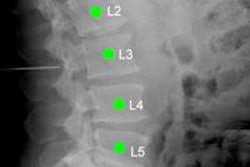The wavelet transform algorithm, first reported in 1910 but languishing without applications until the 1990s, has become an important tool for medical imaging, especially MRI, according to an editorial in the International Journal of Biomedical Engineering and Technology.
Conventional processing applies a Fourier transform algorithm to convert raw signals from imaging into a display, but a wavelet transform could improve medical imaging significantly, wrote Satya Singh and Shabana Urooj from Gautam Buddha University in Uttar Pradesh, India (Int J Biomed Eng Technol, September 2015, Vol. 19:1 pp. 1-25).
A wavelet transform method applied to raw imaging data would boost signal-to-noise ratio by ignoring artifacts generated by interfering electrical signals that are picked up by the scanner, they wrote.
The approach is useful beyond MRI in electrocardiology, denoising biomedical images, and facilitating functional neuroimaging, the authors wrote. An added bonus is the much smaller file size of wavelet files compared to conventional reconstruction algorithms.



















